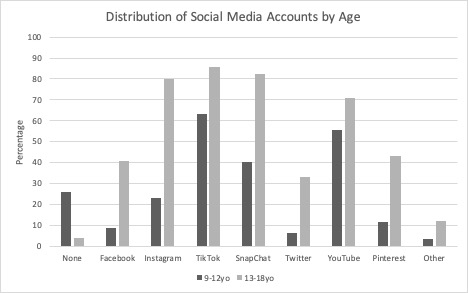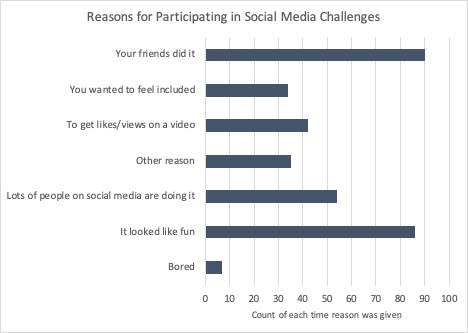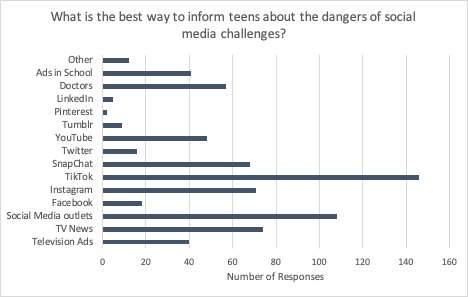Adolescent Medicine: General
Adolescent Medicine 3
504 - Adolescent Views on Social Media Challenges and Their Dangers
Publication Number: 504.3

Shaheen Andreas, DO (she/her/hers)
Pediatric Emergency Medicine Fellow
UCONN/ Connecticut Children's
East Lyme, Connecticut, United States
Presenting Author(s)
Background: Social media is a primary source of communication for adolescents. Challenges through social media have become common and many lead to serious injuries or death. Little is known about how adolescents view these challenges or their dangers.
Objective: To query a cohort of adolescents about their views of social media challenges, their dangers and the best methods to provide education.
Design/Methods:
A convenience sample of adolescents in the emergency department completed a 28-item survey with questions related to challenges, dangers and trusted sources of education. Inclusion criteria: English or Spanish speaking, ages 9-18 years, triage levels 2-5. Exclusion criteria: Inability to read/complete survey, active suicidal ideation or primary behavioral health problem. Survey results were analyzed with descriptive statistics.
Results: 281 participants completed the survey. The average age was 13.3yo (+/-3), 59% of participants were female, 39% white, 22% Black or African American, 32% Hispanic, and 7% other. 12% did not have any social media accounts and were not offered further media items. Females had significantly more social media accounts, with an average of 4.1 compared to 3.5 for males (p=0.04). 13-18yo teens had significantly more social media accounts (mean=4.9) compared to 9-12yo’s (mean = 2.4), (p< 0.001). The most popular social media account was TikTok (Figure 1). The number of social media accounts held by a participant was significantly associated with challenge participation (p < 0.001), even when adjusting for age and sex. Teens noted the most common reason to participate in a challenge was because their friends did it or because it looked like fun (Figure 2). The likelihood of participating in a challenge did not change when participants knew it was dangerous. Knowing someone who was injured or went to the emergency department after participating in a challenge was significantly associated with increased risk of challenge participation after adjusting for age and sex (OR=2.07, 95% CI 1.16 to 3.69, P=0.013). Teens overwhelmingly thought dissemination of information regarding the dangers of challenges should be made on social media itself, specifically TikTok (Table 1).
Conclusion(s): The number of social media accounts reported, or knowing someone who was injured during a challenge directly correlated with an increased likelihood of participating in a social media challenge. Participation in these challenges is not affected by knowing it may be dangerous. The best venue to inform teens about the possible dangers of these challenges may be via the social media platforms themselves. 


